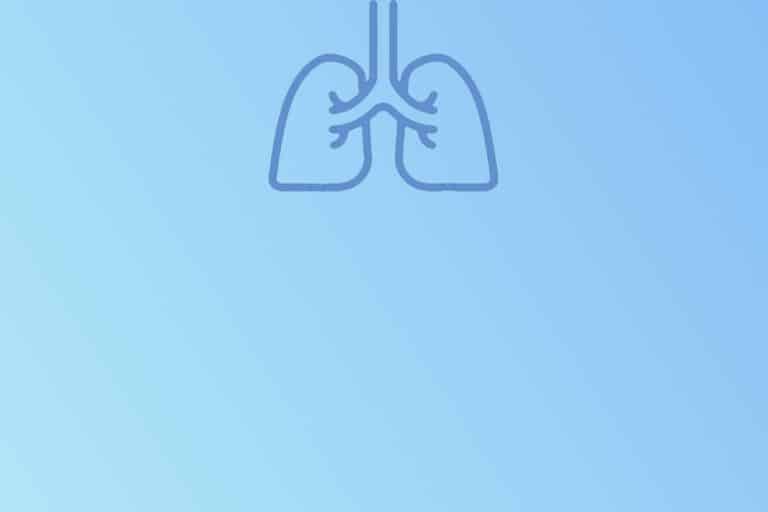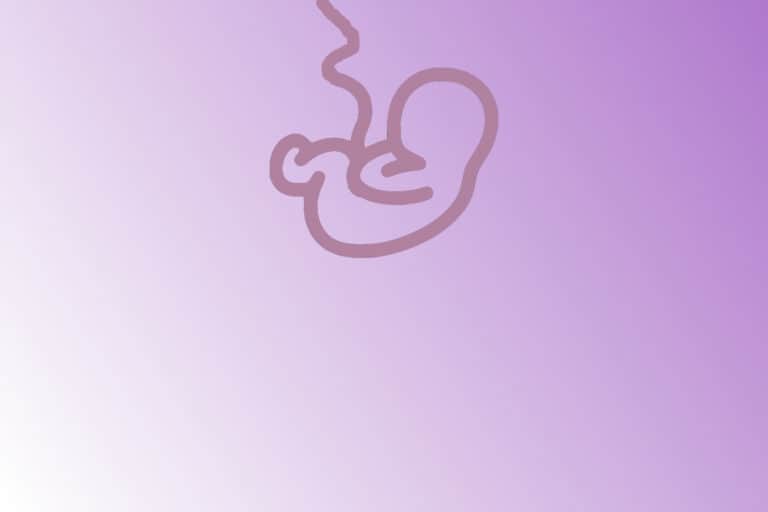Bronchopulmonary dysplasia
Bronchopulmonary dysplasia (BPD) or chronic lung disease (CLD) is a typical disease of extremely low birth weight infants (ELBW; birth weight < 1000g) who experienced adverse lung development but were not necessarily exposed to mechanical ventilation (“new” BPD). Originally, BPD was linked to acute respiratory failure (of various origins) and prolonged mechanical ventilation (“old” BPD). The incidence of BPD in ELBW infants range from 15-50% and it is inversely related to decreasing gestational age.
BPD is multifactorial disease (infection, prematurity, nutrition, aspiration, oxygen, mechanical ventilation, fetal growth restriction) where the risk factors have great impact on immature and developing lung tissue = anatomical and functional changes.
BPD grades
- mild = oxygen dependency at day of life (DOL) 28
- moderate = oxygen dependency at 36 weeks of gestation (36+0)
- severe = mechanical ventilation at 36 weeks of gestation (36+0)
“OLD” BPD
- mechanical ventilation and oxygen toxicity damage pulmonary parenchyma of immature lungs
- increased cellular reaction after starting mechanical ventilation (increased number of granulocytes and macrophages; pulmonary edema)
- acute respiratory distress syndrome (ARDS) => mechanical ventilation (volume trauma, barotrauma, oxygen) => exsudation => proliferation => reparation => BPD
“NEW” BPD
- perinatal infection (e.g. Ureaplasma urealyticum)
- lung inflammation
→ increased pro-inflammatory cytokines [IL-8, macrophage inflammatory protein 1] + decreased anti-inflammatory cytokines [IL-10] in the exhaled gas of newborns with subsequent BPD development)
→ increased number of neuroendocrine cells , eosinophils, mast cells in the lung tissue - Fetal and Systemic Inflammatory Response Syndrome (FIRS/SIRS without ARDS) => inflammation + ARDS development => exsudation => proliferation => BPD
Diagnosis
The end result of pathophysiologic changes described above lead to reversible and irreversible alterations to lungs associated with typical clinical features (oxygen and ventilator dependency due to respiratory insufficiency).
Pathophysiological features
- Lung volume changes (alveolar space restriction)
- Decreased lung compliance (interstitial tissue increase)
- Increased airway reactivity
- Disruption of alveolarization and vascular bed formation
Histopathological features
- Necrotizing tracheobronchitis
- Tracheomalacia
- Peribronchial fibrosis
- Obstructive fibroproliferative bronchiolitis
- Atelectasis and fibrosis
- Hyperinflation => bullous emphysema
- Destruction of alveolar microarchitecture
- Alveolar hypoplasia
- Hypertrophy of tunica media (smooth muscle cells) of pulmonary arteries
Clinical Signs
- Respiratory insufficiency => see below
- Dyspnea = worsened breathing (intercostal recessions, nasal flaring)
- Tachypnea = breathing rate > 60/minute
- Apnea = absence of breathing (central x peripheral x mixed)
- Desaturation/Cyanosis (typically instability and fluctuation of saturation and oxygen requirements)
- Auscultation (prolonged exspirium; wheezing; murmur due to persistent ductus arteriosus (PDA) or right-side heart failure due to cor pulmonale – increased pulmonary vascular resistance)
- Failure to thrive (due to increased energy requirements)
Laboratory Findings
- Blood gas = hypercapnia + hypoxemia + acidosis (respiratory, mixed)
- Electrolyte dysbalance = due to acid-base changes (hyponatremia, hypokalemia, hypochloremia)
Imaging
- Chest X-ray = diffusely decreased transparency; increased airway resistance (negative aerobronchogram); pulmonary edema; emphysema and atelectasis (heterogenous distribution), bullae (severe emphysematous regions); fibrosis
- ECHO = cor pulmonale; secondary pulmonary hypertension; hypertrophic cardiomyopathy due to steroid or vasopressor therapy
Differential diagnosis (conditions with respiratory insufficiency)
- pneumonia
- aspiration
- congenital airway and lung malformations
- infection/sepsis
Therapy
Oxygen
- Prevents increased pulmonary vascular resistance that can lead to pulmonary hypertension and cor pulmonale (hypertrophic cardiomyopathy)
- Optimal SpO₂ range seems to be 90-95 %
→ prevents significant hypoxia (cerebral hypoxia, pulmonary hypertension) or hyperoxia (reactive oxygen species, retinopathy of prematurity)
→ sufficient for growth and development requirements of preterm infants
→ decreases the risk for central apnea and sudden infant death syndrome (SIDS)
→ dosing based on pulse oximetry (peripheral oxygen saturation)
→ administered through mask or nostrils (oxygen as gas needs to be warmed and humidified)
→ FiO₂ 0.21 = 21% oxygen concentration; FiO₂ 1.0 = 100% oxygen concentration
→ home oxygen therapy more severe forms of BPD (WHO recommendations)
Mechanical Ventilation
- The most severe forms of BPD
- Prolonged inspiration and expiration times (=> decreased frequency of back-up artificial breaths); usually higher tidal volumes required (8-10 ml/kg)
Bronchodilation
- Methylxanthines (Caffeine; Theophylline)
→ dilate airways; reduce airway resistance; improves lung compliance
→ mild diuretic effect
→ central respiratory stimulation (Caffeine is used to prevent central apnea of prematurity)
→ can be given PO (Caffein citrate) or IV (Peyona)
→ usually for long-term use to prevent primary apnea of prematurity
→ Adverse effects: tachycardia; gastroesophageal reflux; gastric irritation; sleep disorders - Beta-2 Agonists (Salbutamol)
→ the most potent bronchodilators
→ can be given PO or IV (Terbutaline = Bricanyl)
→ usually for short-term use to tackle respiratory deterioration in BPD patients
Anti-inflammatory agents – Systemic Corticosteroids (Dexamethasone)
- not for routine use due to many adverse effects
- used only in the most severe forms of BPD (after excluding infection or hemodynamically significant PDA)
- can be given PO or IV
- usually for short-term use to reduce the severity of BPD and facilitate extubation using DART protocol (see Table)
- Adverse effects: arterial hypertension; hypertrophic cardiomyopathy; growth disruption; osteoporosis; increased risk for infection due to immunosuppression; suppression of endogenous hormonal axis; cataract; gastrointestinal bleeding or perforation
| TIME | DOSING | FREQUENCY |
| Day 1 – 3 | 0.075 mg/kg/dose | 12-hourly |
| Day 4 – 6 | 0.050 mg/kg/dose | 12-hourly |
| Day 7 – 8 | 0.025 mg/kg/dose | 12-hourly |
| Day 9 – 10 | 0.010 mg/kg/dose | 12-hourly |
Diuretics
- Furosemide, Hydrochlorothiazide, Spironolactone
- commonly used as adjuvant therapy (improved dynamic lung compliance; reduced airway resistance)
- Adverse effects: electrolyte dysbalance; blood pressure fluctuation
Adjuvant Therapy
- Parenteral nutrition (energy requirements, antioxidants, vitamin A)
- Antibiotics
- Analgesia/Sedation (during mechanical ventilation = blocks interference)
- Nursing care (secretions, handling, vitals signs monitoring, comfort and pain scoring, invasive lines check-up – endotracheal tube, cannulas, skin care, enteral feeding, eye care)
- Prevention of RSV (respiratory syncytial virus) infection (Synagis = Palivizumab = passive immunisation with monoclonal antibodies) (Synagis – FDA)
Prognosis
Depends on the severity of BPD and occurrence of complications associated with the disease (irreversible lung tissue damage; cardiac complications; pneumonia)
Increased risk for adverse neurodevelopment (failure to thrive; psychomotor delay; sensory deficits or loss; increased risk for sudden infant death syndrome) in severe BPD or BPD associated with numerous complications
Primary efforts focus on reducing the incidence of premature birth (BPD is inversely related to gestational age), impact of mechanical ventilation and oxygen on developing preterm lungs and optimal resolution of BPD-associated complications
References
① Hwang JS, Rehan VK. Recent Advances in Bronchopulmonary Dysplasia: Pathophysiology, Prevention, and Treatment. Lung. 2018;196(2):129-138. doi:10.1007/s00408-018-0084-z





